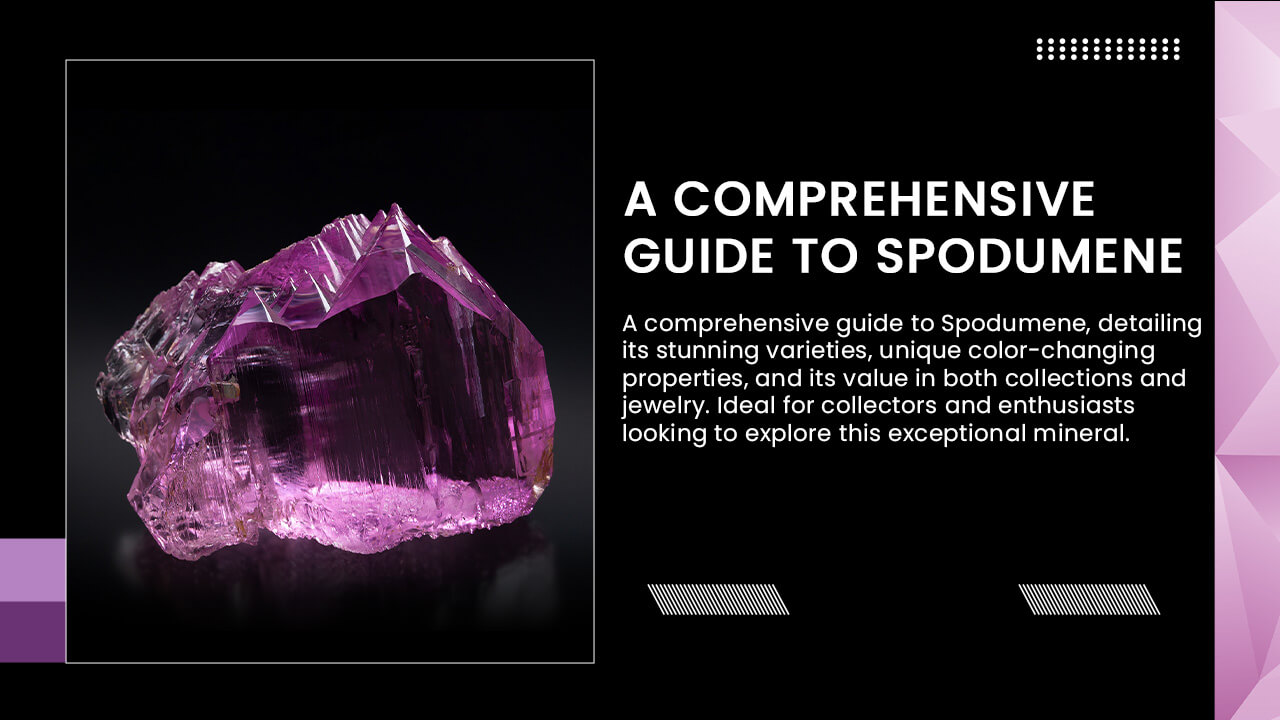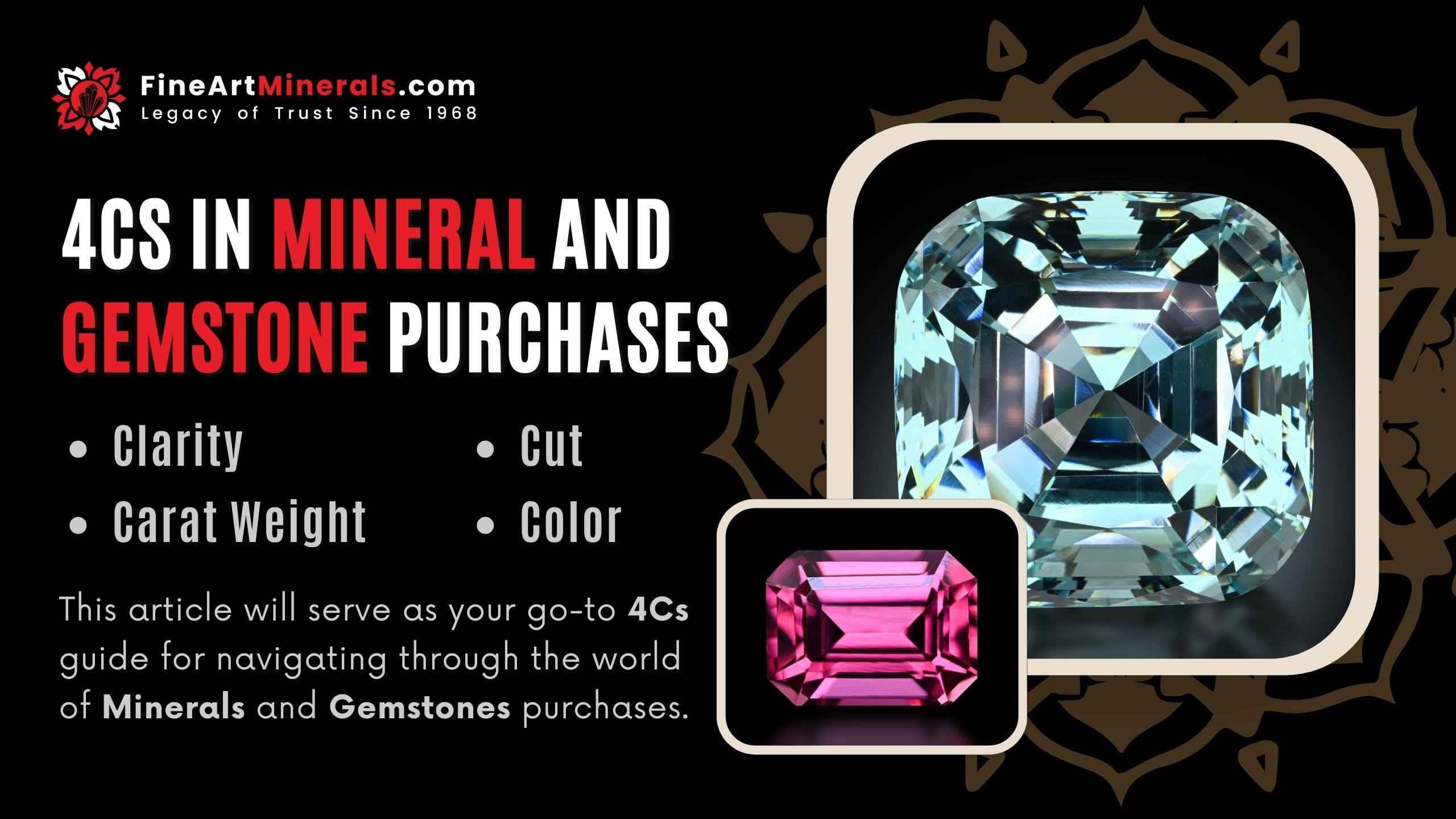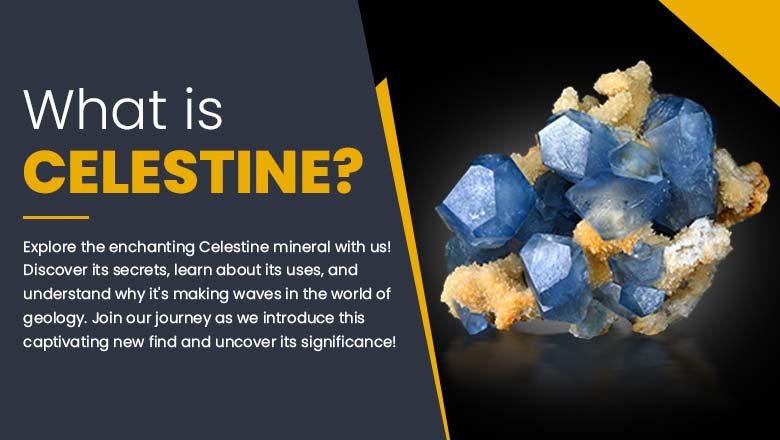
A Comprehensive Guide to Spodumene-Exploring Its Beauty, Varieties, and Market Value
In the world of minerals, and gemstones, SPODUMENE stands out as a mineral of exceptional beauty, and value. Whether you’re

In this article, I will let you know “Understanding the 4Cs in Mineral and Gemstone Purchases”. When it comes to purchasing minerals and gemstones, having a solid understanding of the 4Cs is essential.
The 4Cs, which stand for Color, Clarity, Cut, and Carat weight, are the key factors that determine the value and quality of these precious stones.
Whether you’re a seasoned collector or an enthusiastic beginner, this article will serve as your go-to guide for navigating through the world of Mineral and Gemstone purchases.
With so many options available in the market, it’s crucial to have a grasp on each aspect of the 4Cs to make informed decisions.
By understanding color grading, clarity characteristics, various cuts, and carat weights of gemstones and minerals, you’ll be equipped with the knowledge necessary to pick out stones that align with your preferences and budget.
This guide is designed to simplify the complexities often associated with mineral and gemstone purchases.
We will break down each “C” individually and provide practical insights along the way.
Join us as we unravel the mysteries behind color vibrancy, hidden flaws or inclusions visible under magnification, precision cuts that enhance brilliance and durability, as well as different carat weights—transforming you into an educated buyer ready to embark on your mineral and gemstone journey.
Let’s dive into this fascinating world where beauty meets science.
Table of Contents
ToggleFrom the dazzling brilliance of diamonds to the alluring allure of colored gems, understanding the 4Cs in mineral and gemstone purchases is essential.
Gemstones are nature’s artistic masterpiece, each boasting its own unique hues. When evaluating gemstones, it is crucial to consider three distinct aspects: hue, saturation, and tone.
The primary color category characterizes a gemstone’s hue. For instance, diamonds range from colorless to varying shades of yellow or brown. On the other hand, colored gemstones showcase an array of mesmerizing colors such as deep red rubies or vivid blue sapphires.
Saturation refers to the intensity or vividness of a gemstone’s color. Gems with high saturation levels are often more valuable due to their captivating and vibrant appearance.
Tone describes the darkness or lightness of a gemstone’s color. This crucial factor significantly impacts its overall appearance and aesthetic appeal.
By understanding these three dimensions of color – hue, saturation, and tone – one can appreciate the rarity that lies within each gemstone’s unique palette.
Minerals and Gemstones possess a unique clarity that enhances their allure and beauty. Clarity is essential as it determines the gemstone’s ability to transmit light smoothly, ensuring optimal transparency and brilliance.
Inclusions are tiny internal flaws or imperfections present within a mineral or gemstone. These can be minerals, fractures, or any other foreign materials trapped during the gem’s formation process.
While they may seem detrimental to a gemstone’s value, they play a crucial role in determining its clarity.
The fewer the inclusions, the higher the clarity grade of a gemstone. The absence of significant inclusions often contributes to exceptional transparency and enhances the stone’s overall beauty.
To evaluate and communicate an accurate assessment of a gemstone’s clarity, industry-standard grading scales are employed.
One such scale is commonly used for gemstones known as the GIA (Gemological Institute of America) Clarity Scale.
This scale categorizes minerals and gemstones into several grades ranging from Flawless (no visible internal or external flaws) to Included (with noticeable inclusions).
The cut of a gemstone is an exquisite art that transforms rough stones into dazzling masterpieces.
Gemstones are skillfully cut to exhibit numerous facets, which are flat angled surfaces that reflect light. The number and arrangement of these facets vary depending on the specific cut style, whether it’s a round brilliant cut or a princess cut.
Each facet interacts with light in different ways, resulting in the mesmerizing play of colors and scintillation characteristic of fine gemstones.
Proper proportions are vital in achieving optimal light reflection and maximizing a gemstone’s sparkle. Well-proportioned gems harness the beauty of symmetry, ensuring that light enters through the crown, reflects internally off the facets, and radiates back outward.
This precise craftsmanship enhances the gem’s brilliance and fire.
The cut plays an integral role in amplifying the beauty and allure of rare gemstones. An ideal cut can transform even a lower-grade stone into a stunning jewel by maximizing its visual appeal through proper angles and symmetry. Conversely, a poorly executed cut can diminish the stone’s potential beauty.
Rare gems often feature exceptional cuts that showcase their uniqueness:
Known for its vibrant sparkle and versatility, this rectangular or square-shaped cut combines the elegance of an emerald cut with the brilliance of a round brilliant cut.
This iconic romantic shape exhibits excellent brilliance while symbolizing love and affection.
With its distinctive step-cut facets, this sophisticated choice highlights exceptional clarity while exuding timeless elegance.
These extraordinary cuts not only contribute to rarity but also enhance the visual appeal and value of these splendid gemstones.
When it comes to gemstones, carat weight is often associated with size, but it’s important to note that these two concepts are not synonymous.
Contrary to popular belief, the physical size of a gemstone doesn’t solely depend on its carat weight. The cut and shape of a gemstone can greatly influence its perceived size. A well-cut gem may appear larger than a gem with the same carat weight but different proportions. Understanding this distinction is crucial when evaluating a gemstone’s worth.
Carat weight plays a significant role in determining the price of a gemstone. Generally, larger stones command higher prices due to their greater rarity and desirability.
However, other factors such as color, clarity, and cut also contribute to a stone’s value. It’s important to consider these aspects holistically when assessing the overall worth of a gem.
Rare gemstones often possess larger carat weights, making them stand out among their counterparts. These exceptional stones capture attention with their impressive size and are highly sought after by collectors and jewelry enthusiasts alike.
The combination of rarity and substantial carat weight amplifies the allure and exclusivity of these gems.
When it comes to purchasing minerals and gemstones, having a clear understanding of the 4Cs is vital. Why? Because these factors play a crucial role in determining the quality, value, and overall allure of these precious stones.
By familiarizing yourself with the 4Cs – Color, Clarity, Cut, and Carat weight – you gain a comprehensive understanding of what makes each stone unique.
This knowledge enables you to make informed decisions based on industry standards while ensuring that you are investing in high-quality pieces.
Mineral and gemstone purchases represent an investment. By knowing how each “C” impacts a stone’s value, you can ensure that you are getting your money’s worth.
For example, an understanding of color variations can help distinguish between rare gems and less desirable ones.
Every individual has different tastes when it comes to gemstones. Whether you prefer vibrant colors or subtle hues, intricate cuts or simplistic designs, understanding the 4Cs allows you to choose stones that match your personal style and preferences.
Unfortunately, not all sellers have honest intentions. With a solid grasp of the 4Cs, you are better equipped to identify misrepresentations or deceptive practices such as synthetic stones being sold as natural or low-grade stones masquerading as premium-quality gems.
The world of minerals and gemstones can be overwhelming for beginners.
However, armed with knowledge about the 4Cs, you can approach your purchasing decisions with confidence. Instead of relying solely on recommendations or trends, you will have an objective basis to evaluate each stone’s worth.
By comprehending the significance behind the 4Cs, you become an empowered buyer. This knowledge allows you to assess the quality, value, and beauty of minerals and gemstones, ensuring that your purchases bring long-lasting joy and satisfaction.
Some additional considerations for rare gemstone buyers are given below one by one.
The geographic origin of a mineral or gemstone can hold tremendous significance in determining its rarity and value.
Certain regions have gained reputations for producing specific types of minerals and gemstones, each with unique characteristics that make them highly sought after.
For instance, the Gilgit Baltistan, Pakistan is renowned for its exceptional Aquamarine, while Swat, Pakistan is celebrated for its vibrant emeralds. Understanding the origin of a mineral or gemstone adds an extra layer of appreciation and allure to its story.
It’s essential to touch upon the topic of minerals or gemstone treatments and enhancements. While some treatments are widely accepted within the industry and can improve a its appearance or durability, others can significantly impact its rarity and value.
Common treatments include heat treatment to enhance color or clarity, filling fractures to improve the stone’s appearance, or irradiation to alter color.
Buyers should be aware of any treatments or enhancements present in a gemstone and understand their potential effects on value.
Overall, considering the origin of a gemstone provides insight into its unique geological formation and enhances its desirability.
Understanding different treatments helps buyers make informed decisions, ensuring they are aware of any alterations made to enhance a stone’s appearance.
When evaluating the rarity and value of gemstones, it is important to consider the 4Cs: clarity, cut, color, and carat weight. Clarity refers to the presence of any internal or external flaws.
A well-cut gemstone maximizes its brilliance and enhances its overall beauty. Color plays a significant role, with rare and vivid hues being more valuable. Carat weight indicates the size but does not necessarily determine the overall size perception.
By understanding these aspects, you can confidently navigate the world of rare gemstones and make informed choices that align with your preferences and expectations.
So, this is the complete information about Understanding the 4Cs in Mineral and Gemstone Purchases, If you have any kind of suggestions or questions, feel free to ask in the comment section below.
OR
You can also contact us if you want any kind of Minerals and Gemstones, Contact Us
Thanks for Reading
Share

In the world of minerals, and gemstones, SPODUMENE stands out as a mineral of exceptional beauty, and value. Whether you’re

Welcome to the enchanting world of Celestine mineral – a gem that seems to have been plucked straight from the
This Faden Quartz crystal shows amazing luster and wonderful shape.
A wonderful crystal of Aquamarine features amazing color and a nice cluster shape.
This Faden Quartz crystal shows high luster and amazing clarity.
A wonderful specimen featuring pink Tourmaline with Quartz.
The Tourmaline crystals exhibit sharp terminations and a brilliant luster that enhances their vibrant hues.
Dumortierite Quartz is one of the rarer and more unusual blue varieties of Quartz.
No account yet?
Create an Account